AlmaLinux is one of the most preferred choices for a server operating system, particularly among those seeking an enterprise-grade distribution within the RHEL family.
At the same time, it’s also often a go-to option for more conservative desktop users who value stability over having the latest features. When it comes to desktop use, the web browser is the most essential application, with Google Chrome being the dominant browser on this front.
However, it’s not present in Alma’s software repositories for two simple reasons: first, it’s not open-source. AlmaLinux, like other RHEL-based distributions, only includes free and open-source software in its official repositories. Additionally, redistributing proprietary software, such as Google Chrome, requires specific permissions from Google. Including it in a public repository would involve legal and logistical complications.
Of course, that doesn’t mean AlmaLinux users have to miss out on using the Chrome browser—far from it. In fact, with just a few simple steps, I’ll guide you through the process of quickly and easily installing Google Chrome on your AlmaLinux 10 system. So, let’s dive in.
Install Google Chrome on AlmaLinux 10
This tutorial will utilize the sudo command and assume that your current user has the necessary permissions to execute commands as a privileged user.
Step 1: Download and Import Google’s GPG Key
To ensure that the packages we receive to install the Chrome browser are genuine, we should first download and import the Google-signed GPG key on our AlmaLinux 10 system. To do so, type the following two commands:
curl -O https://dl.google.com/linux/linux_signing_key.pub
sudo rpm --import --nodigest --nosignature linux_signing_key.pubCode language: Bash (bash)
As you can see in the screenshot above, the second command returns a few messages, but don’t worry, they’re just warnings. Here’s the case.
The rpm command complains about a handful of expired or SHA-1-signed subkeys that are still bundled in Google’s keyring. However, AlmaLinux 10 tracks CentOS Stream/RHEL 10, and in May 2024, Red Hat completely removed support for SHA-1.
At the same time, the current Google public key (“linux_signing_key.pub“) is still self-signed with SHA-1. This is why we use “–nodigest –nosignature” in the key import command. What I’m trying to say is that this is completely on Google’s end, so it’s out of our hands.
The good news is that the key you actually need is already in your RPM database despite the warnings. And because the packages themselves are signed with RSA/SHA-512, when installing the browser, the transaction will pass the GPG check. In other words, we can proceed safely with installing Google Chrome on AlmaLinux 10.
Step 2: Add Google’s Chrome Repository
After importing the key, you must add the official Google Chrome repository to your Alma 10 system. This implies that the update package will be made available with the rest of your system’s regular updates when a new version is released.
sudo tee /etc/yum.repos.d/google-chrome.repo <<'EOF'
[google-chrome]
name=Google Chrome
baseurl=https://dl.google.com/linux/chrome/rpm/stable/$basearch
enabled=1
gpgcheck=1
gpgkey=https://dl.google.com/linux/linux_signing_key.pub
EOFCode language: Bash (bash)Step 3: Refresh Package List
Before proceeding with the installation, you should update the package list. Run the below command to update the repository’s index.
sudo dnf updateCode language: Bash (bash)
As you can see, your new Google Chrome repo is now available and ready for use.
Step 4: Install Google Chrome on AlmaLinux 10
We’re now all set. To install the Chrome browser on your Alma 10 system, run the following command:
sudo dnf install google-chrome-stableCode language: Bash (bash)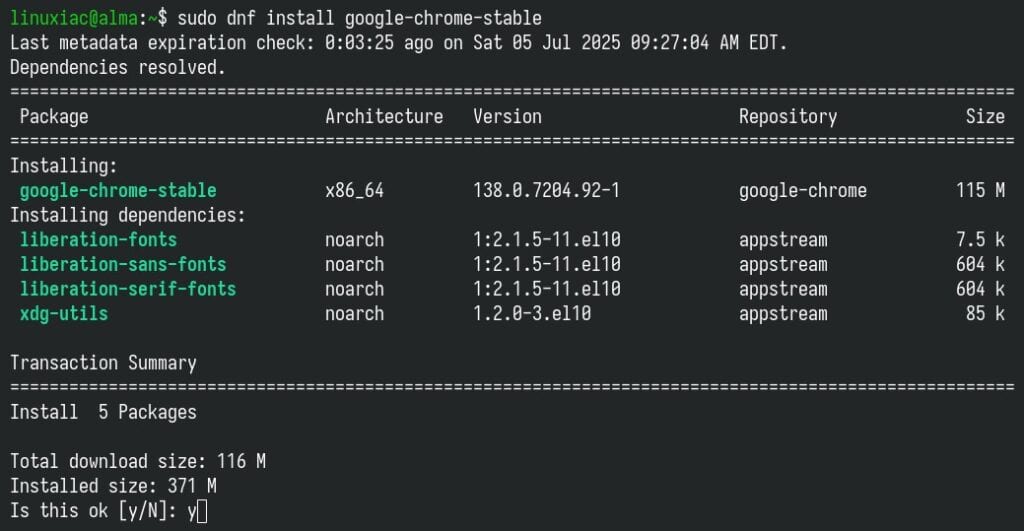
Wait for the installation to finish—it should only take a few seconds. But before you open the browser for the first time, let’s take care of something on the visual side. Here’s what to do.
Step 5: Fix the Missing Chrome Icon in the App Menu (Optional)
If you open the list of applications in the GNOME Dash, you might be a bit surprised to see that Google Chrome isn’t showing its usual icon. Instead, it’s using a generic placeholder—the default icon for apps without an assigned icon.
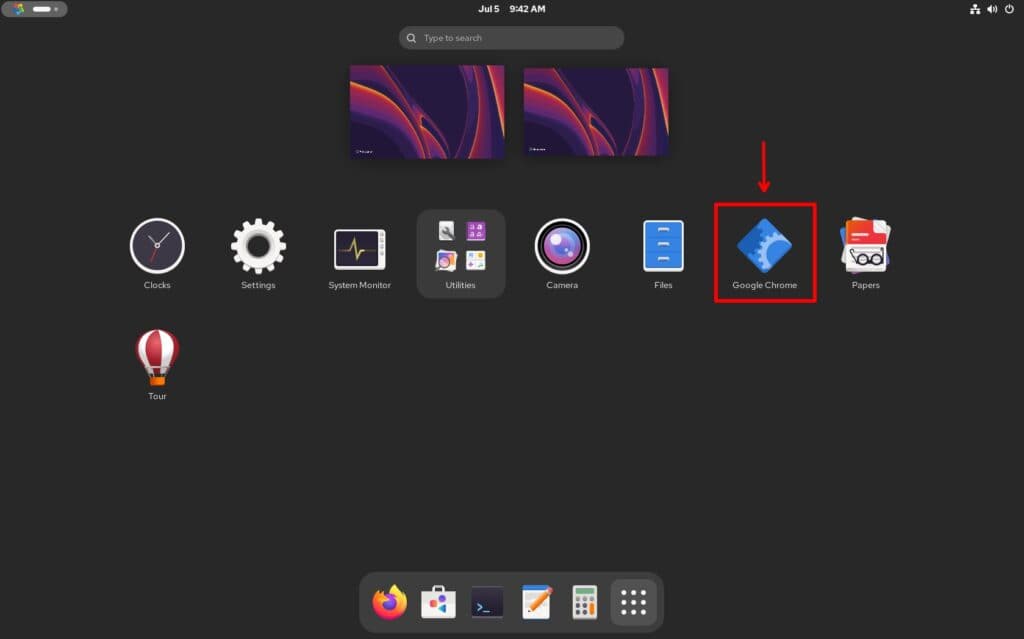
This only happens if you’re using the default icon theme that comes with AlmaLinux 10, which just doesn’t include an icon for Chrome. But no worries—we’ll have that fixed in no time. Run the two commands below.
sudo curl -L https://www.google.com/chrome/static/images/chrome-logo.svg -o /usr/share/icons/hicolor/scalable/apps/google-chrome.svg
sudo gtk-update-icon-cache /usr/share/icons/hicolorCode language: Bash (bash)
The first command uses Curl to download the official Chrome logo in SVG format directly from Google’s servers and saves it to the appropriate icon directory. The second refreshes the GTK icon cache for the hicolor icon theme.
Then, log out of your AlmaLinux 10 system and log back in. Chrome should now show up in your list of applications with its familiar icon—the one we all know and recognize.
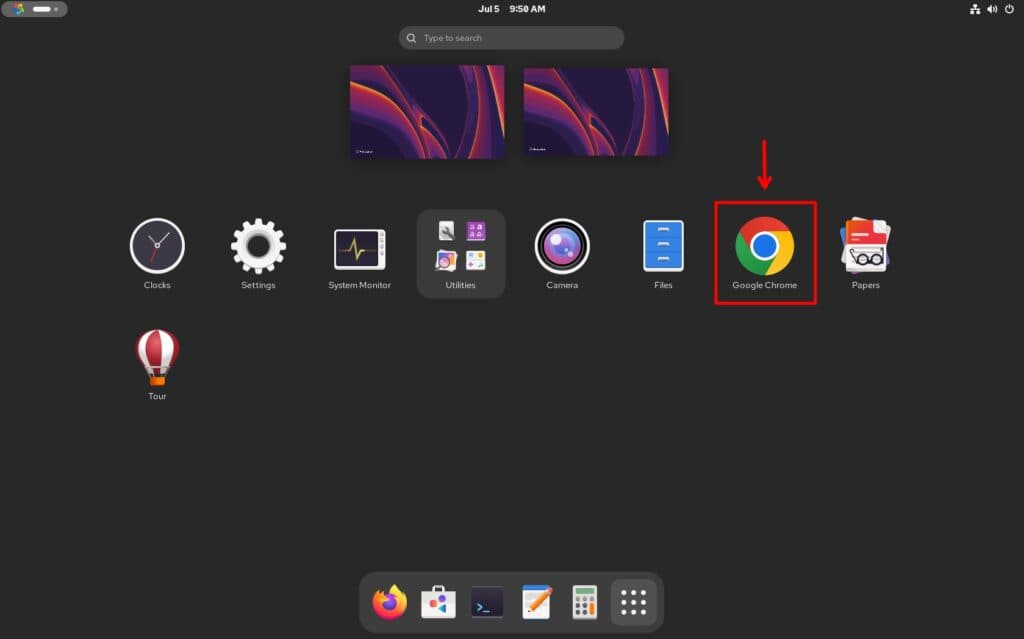
Step 6: Run Google Chrome
That’s all. Click on the icon to run Google Chrome. The first time you’ll have the chance to make it your default browser. You can also choose to “Automatically send usage statistics and crash reports to Google.” It is up to you whether you want to enable this or not. Make your choices, and then click the “OK” button.
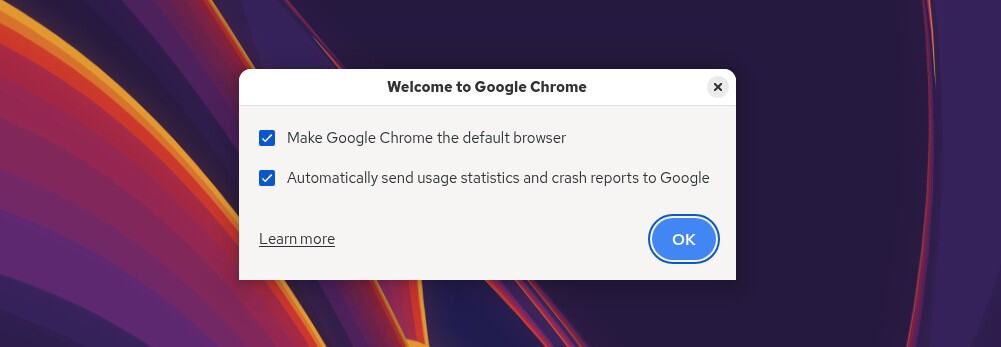
Google Chrome will start. Happy browsing!
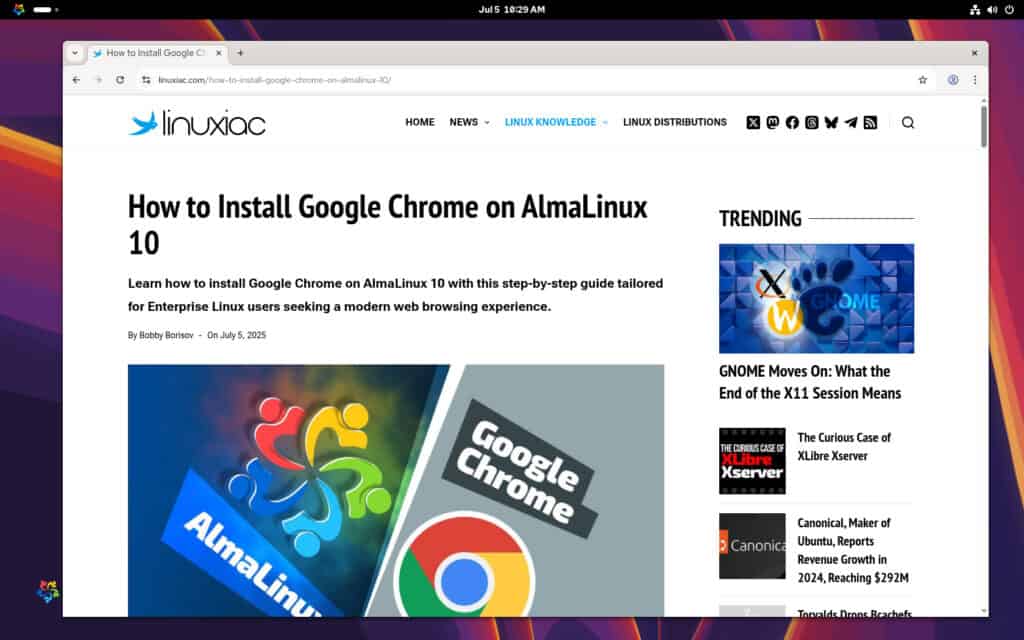
Uninstall Google Chrome
If you decide to remove the Google Chrome browser from your AlmaLinux 10 system for some reason, you can do it quickly and easily by typing the command shown below:
sudo dnf remove google-chrome-stableCode language: Bash (bash)Conclusion
And that’s it! You’ve successfully installed Google Chrome on AlmaLinux 10. Whether you’re using it for work, development, or everyday browsing, you now have a fast, secure, and modern browser at your disposal.
The installation process shown in this guide adds Google’s official Chrome repository to your system, allowing the browser to receive the latest updates automatically whenever you update your system via the Software app or using the DNF command.
Thanks for your time! I hope you find this guide helpful. Thanks for using it, and as always, your comments are welcome.
